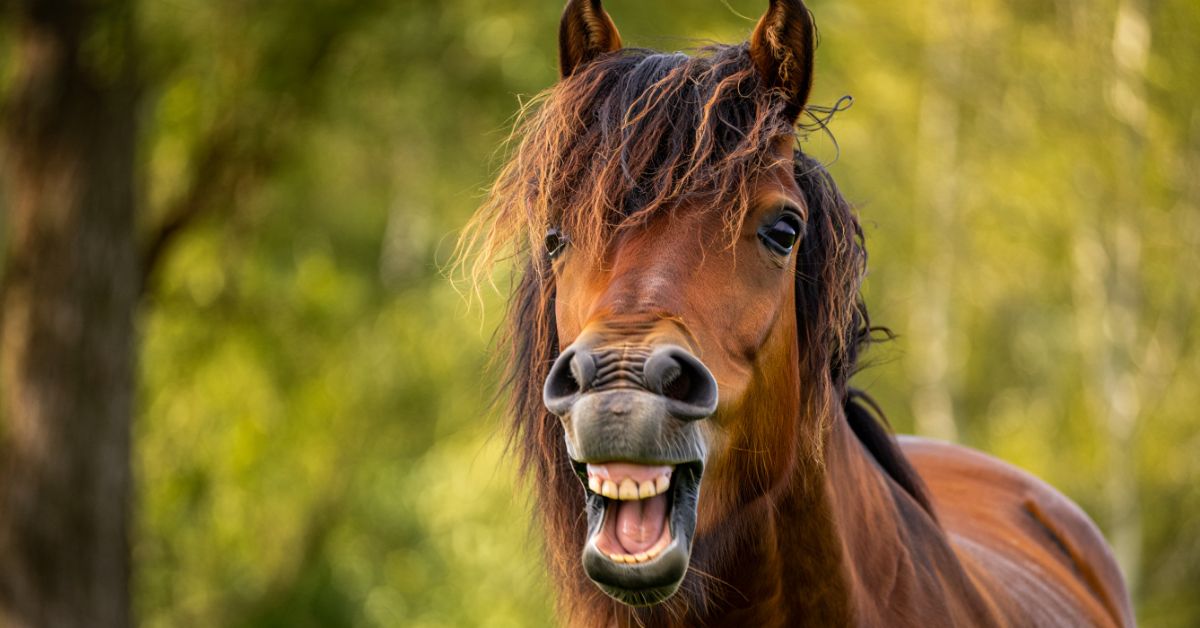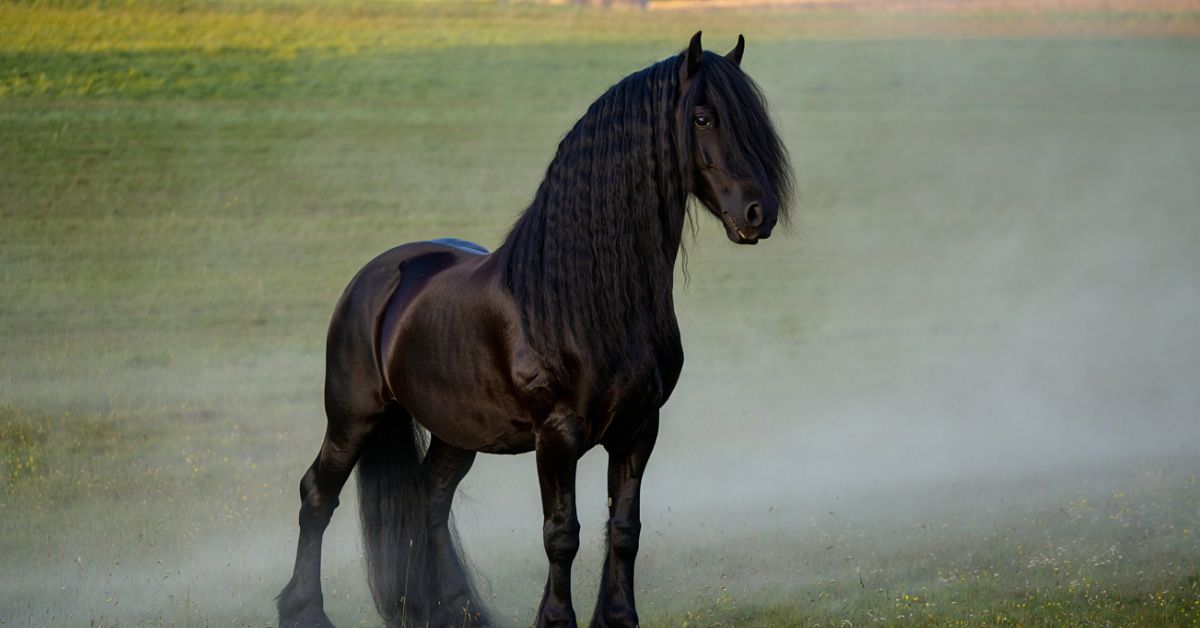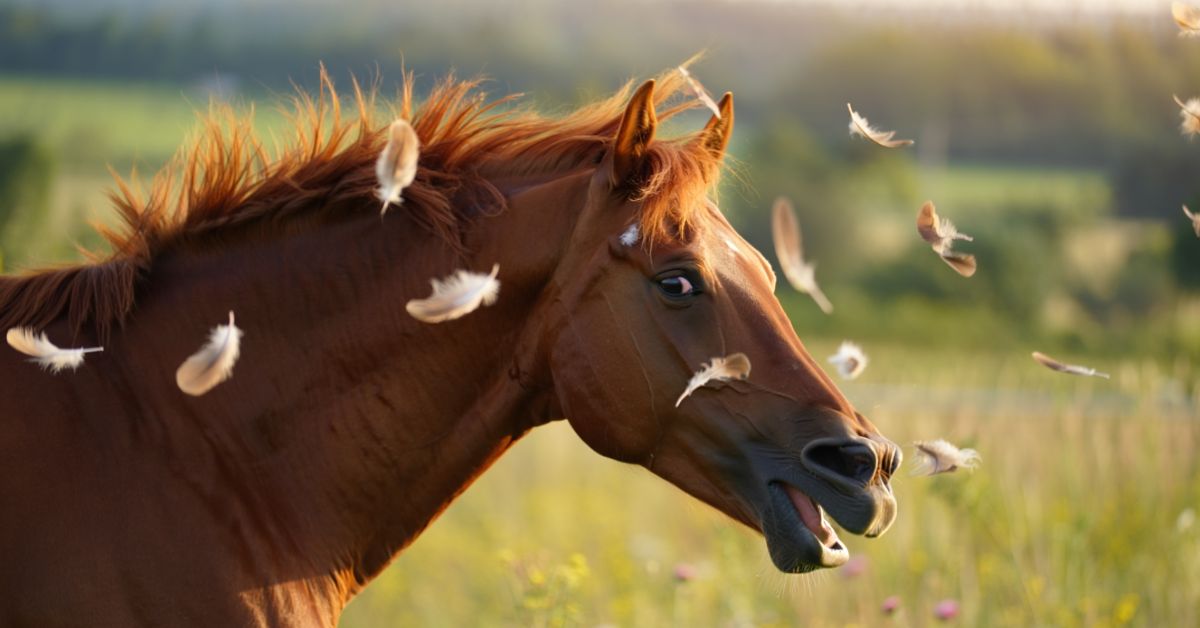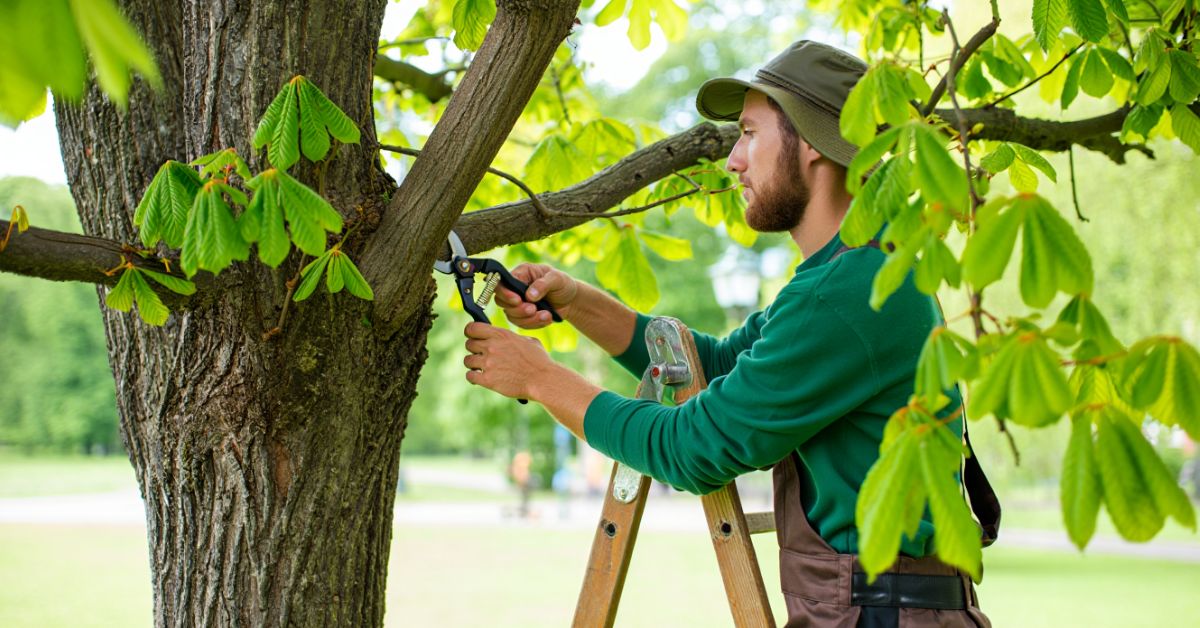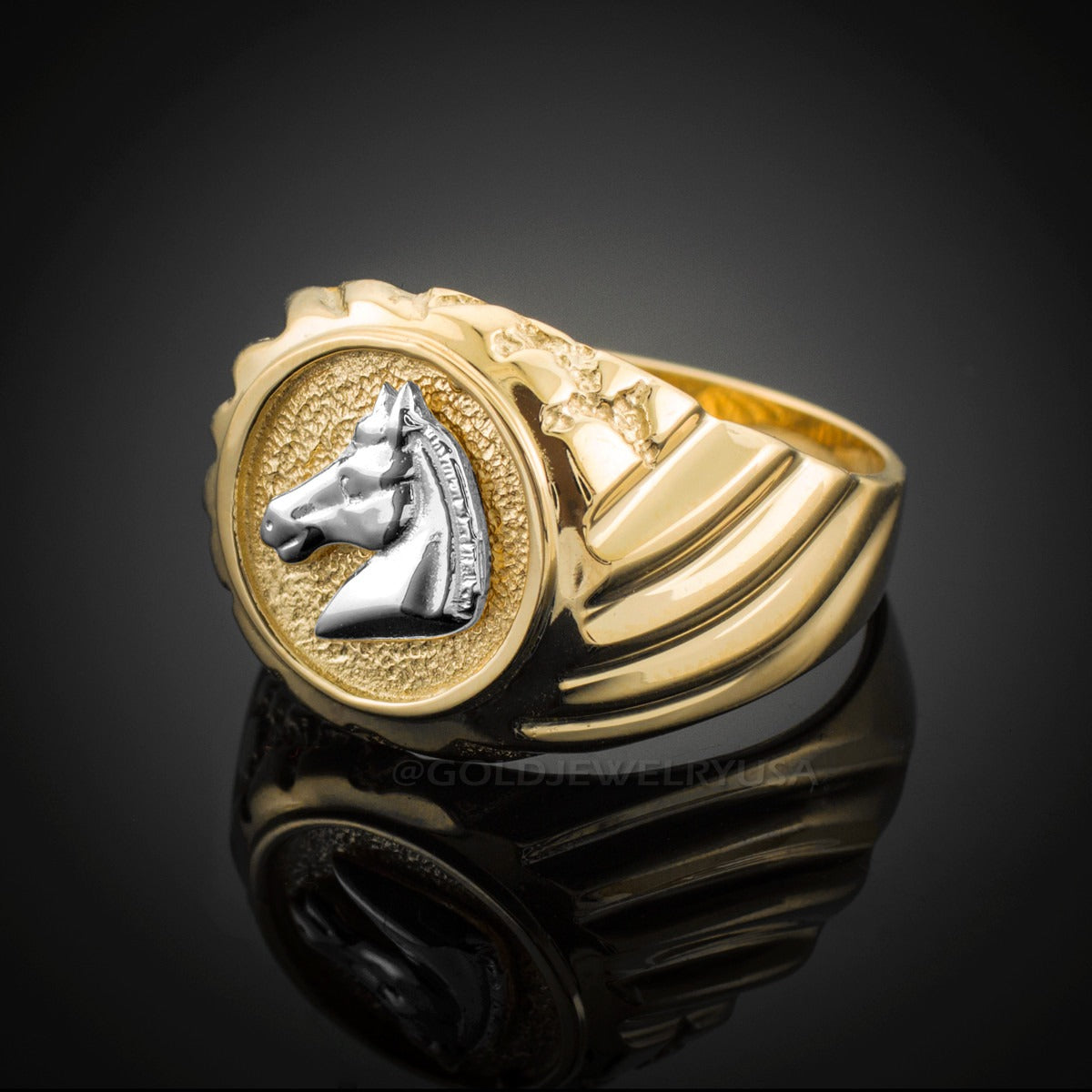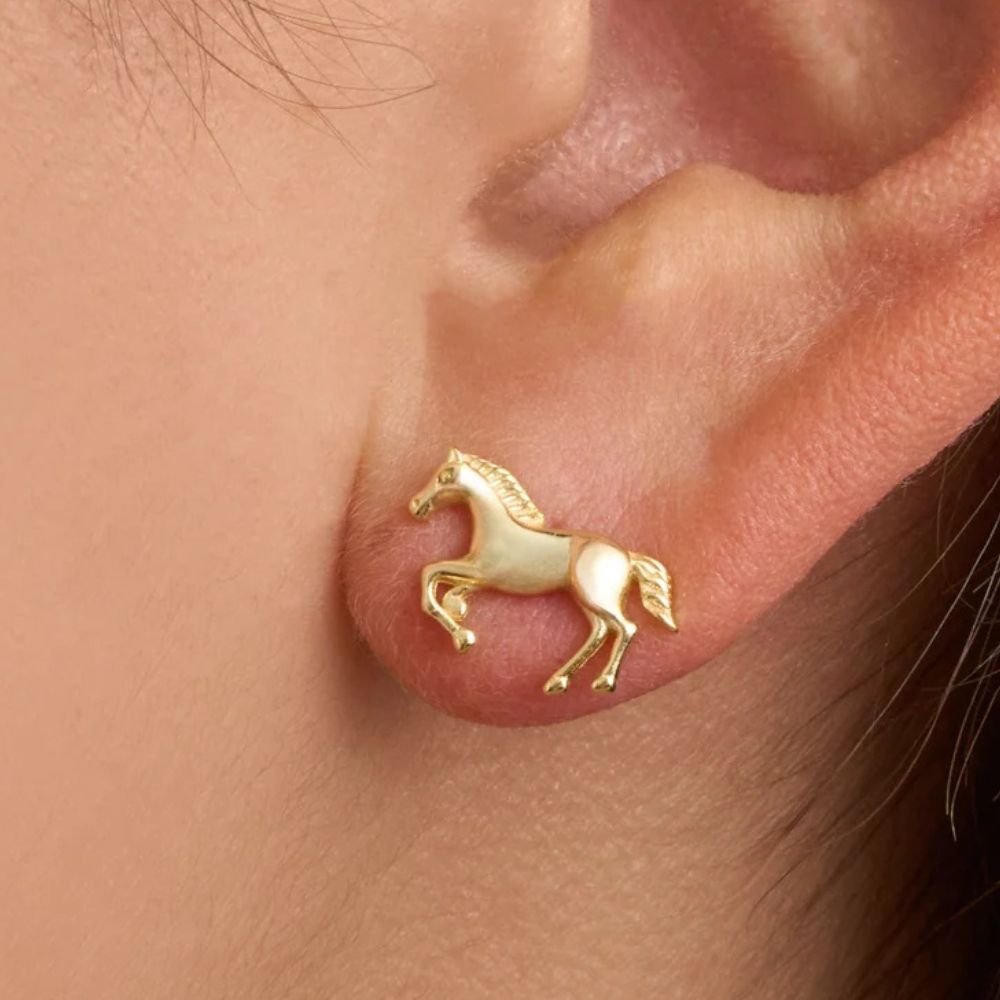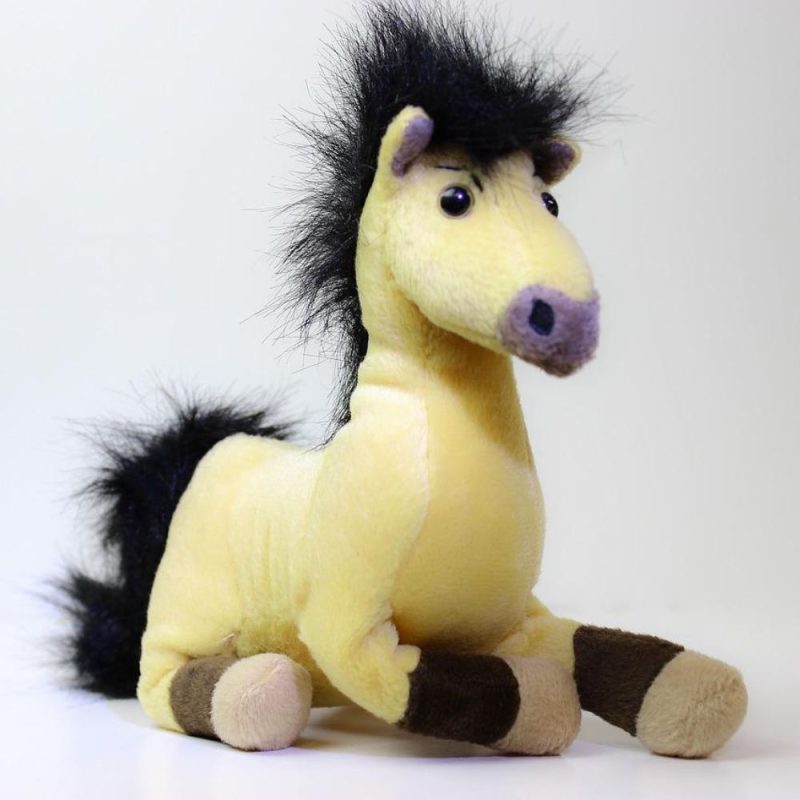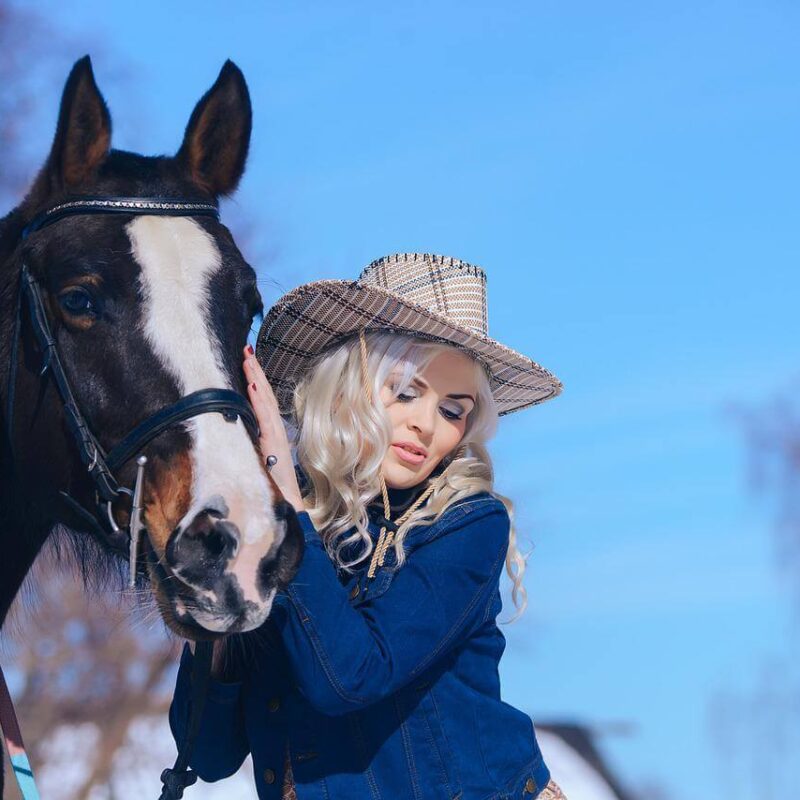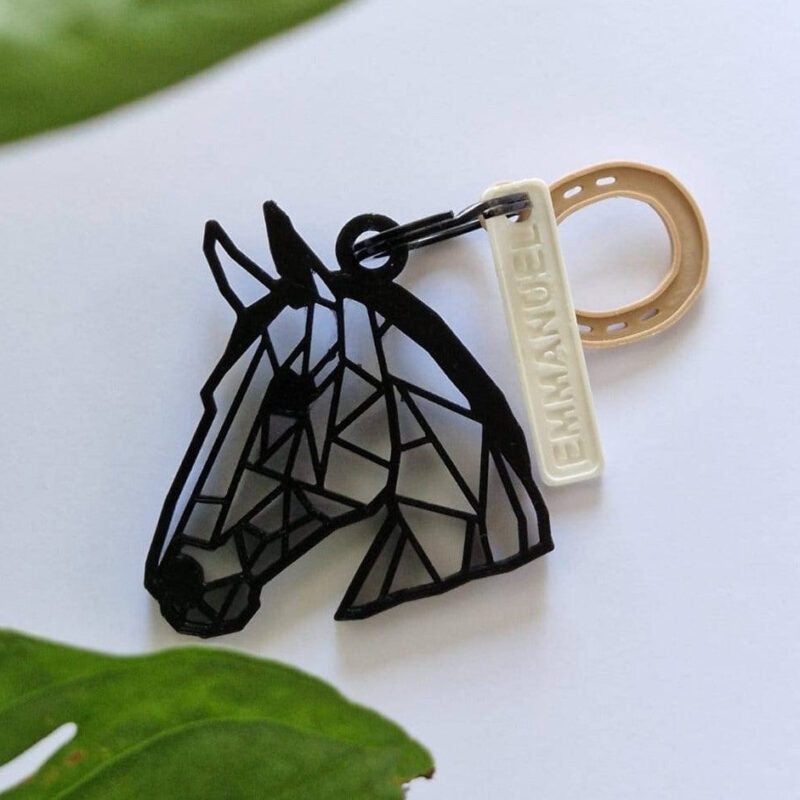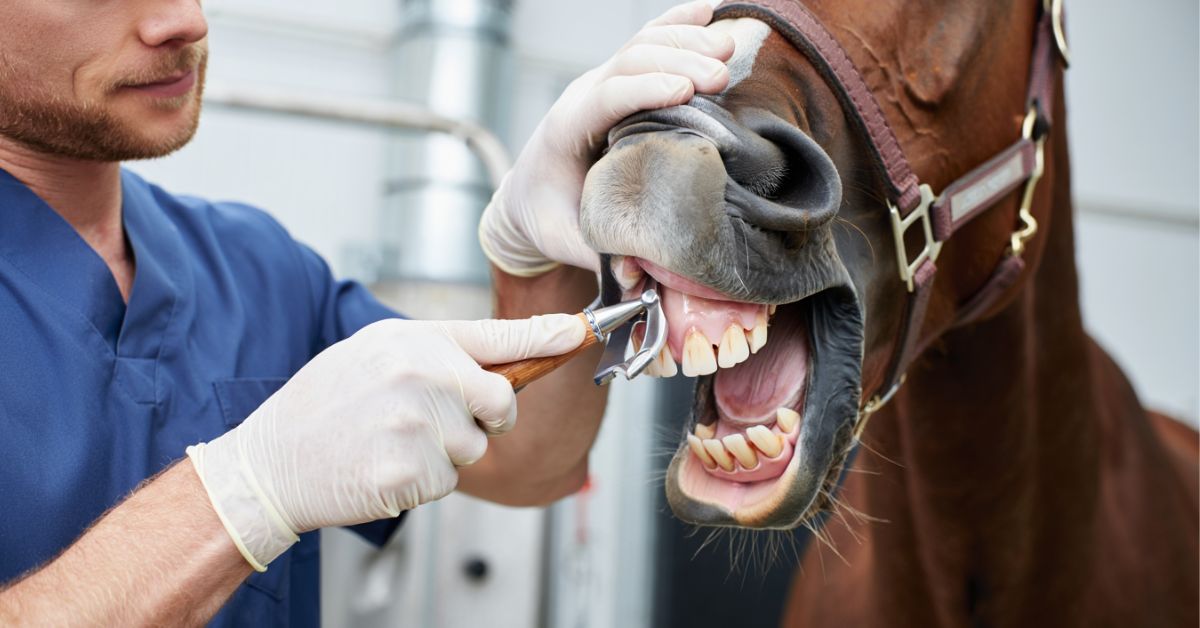
What is Stringhalt in Horses? Understanding This Mysterious Gait Abnormality
If you've ever seen a horse suddenly jerk its hind leg upward in an exaggerated way, you might have witnessed stringhalt in horses. This puzzling condition has left many horse owners scratching their heads, wondering what's going on with their beloved companion. What is stringhalt in horses? Simply put, it's a neuromuscular disorder that causes involuntary flexion of one or both hind legs during movement. The horse's leg snaps up toward its belly in an uncontrolled, dramatic fashion – almost like they're performing a strange, exaggerated march they never signed up for.
Stringhalt in horses manifests as a gait abnormality characterized by sudden, jerky upward movements of the hindlimb. This involuntary flexion happens because of nerve or muscle dysfunction affecting the leg's normal movement patterns. While it can look alarming, understanding this condition is the first step toward helping your horse. Whether you've noticed this high-stepping gait in your own horse or you're simply curious about equine health concerns, this guide will walk you through everything you need to know about stringhalt in horses – from recognizing the classic stringhalt sign to exploring treatment options and management strategies.
Understanding What is Stringhalt in Horses: The Basics 🔍
What Exactly Happens in Stringhalt?
What is stringhalt in horses from a mechanical standpoint? Think of it this way: imagine your horse's leg is attached to an invisible puppet string that someone keeps yanking upward at random moments. That's essentially what stringhalt looks like. The condition causes hyperflexion of hock – meaning the leg bends excessively and involuntarily at the hock joint, often jerking up toward the horse's abdomen.
This equine lameness condition isn't like a typical limp or soreness. It's a neuromuscular disorder that stems from problems with the nerves controlling the hindlimb muscles. The lateral digital extensor muscle plays a crucial role here, and when the communication between nerves and muscles breaks down, you get these characteristic jerky movements.
The Two Main Types of Stringhalt
There are actually two distinct forms of stringhalt in horses, and understanding which type you're dealing with makes a huge difference:
Classic Stringhalt (also called idiopathic stringhalt) typically affects just one leg, though it can impact both. This form develops gradually and the exact cause often remains a mystery. The classic stringhalt sign includes that telltale exaggerated flexion, especially noticeable when the horse turns, backs up, or starts moving after standing still. Many horses with this form show mild stringhalt symptoms that may even improve with exercise as the muscles warm up.
Australian Stringhalt is a whole different beast. This form is directly linked to equine toxic plants, specifically false dandelion (Hypochaeris radicata). When horses graze in paddocks overrun with this plant during certain times of the year – particularly after drought conditions followed by rain – they can develop Australian stringhalt. This type usually affects both hind legs and can spread through entire groups of horses grazing together. The connection between dandelion toxicosis and this condition was first documented in Australia (hence the name), but it's been reported worldwide since then.
The Science Behind the Jerky Movements
So what's actually going wrong inside your horse's body? Stringhalt in horses involves damage to the peripheral neuropathy system – the network of nerves extending throughout the body beyond the brain and spinal cord. Specifically, the condition often involves sciatic nerve dysfunction and problems with the nerves controlling the lateral digital extensor muscle.
When myelin sheath damage occurs (the myelin sheath is like the protective insulation coating around nerve fibers), nerve signals get scrambled or disrupted. It's similar to when electrical wiring loses its insulation – the signals don't transmit properly. This motor nerve damage means the brain's commands to "move normally" don't reach the leg muscles correctly, resulting in those uncontrolled, exaggerated movements.
The proprioception deficit also plays a role. Proprioception is your horse's ability to sense where its legs are in space – like having an internal GPS for body parts. When this sensory feedback system malfunctions, the horse loses precise control over leg positioning and movement, contributing to the jerky, uncoordinated motions characteristic of stringhalt.
Historical Context and Recognition
The term stringhalt has been around for centuries in horse terminology explained texts. The origin of the term 'nag' is different from stringhalt's etymology, but both terms reflect how horse people have observed and categorized equine health concerns throughout history. Veterinarians first documented stringhalt in horses in the 1800s, though the condition surely affected horses long before that.
Recognizing the Clinical Signs of Stringhalt in Your Horse 👁️
The Telltale Clinical Signs of Stringhalt
Spotting stringhalt in horses starts with knowing what to look for. The clinical signs of stringhalt can range from subtle to severe, and they often vary depending on circumstances:
The Characteristic Movement Pattern: The most obvious sign is that distinctive high-stepping gait where the hindlimb suddenly flexes upward in an exaggerated, involuntary motion. Some horses show this involuntary flexion with every step, while others only exhibit it occasionally – perhaps when they're turning, backing up, or first starting to move after standing still. The movement looks mechanical and unnatural, quite different from a horse simply picking up its feet normally or showing typical equine lameness.
When Symptoms Worsen: You might notice the gait abnormality becomes more pronounced when your horse is cold, hasn't moved in a while, or is stressed. Conversely, some horses with mild stringhalt show improvement once they've warmed up and have been moving for several minutes. This variability can make diagnosis of stringhalt tricky – your vet might need to observe your horse in different situations.
Severity Spectrum: Severe stringhalt can be quite dramatic and distressing to watch. The horse might jerk the leg so high that it nearly touches the belly, and in extreme cases, the horse may struggle to move normally at all. This can significantly impact the horse's quality of life and ability to work. On the other end, mild stringhalt might show up as just a slight extra hitch or lift in the stride that you might initially dismiss as a quirk or minor unevenness.
Distinguishing Stringhalt from Similar Conditions
Here's where the diagnosis of stringhalt gets interesting – several other conditions can mimic its appearance, making differential diagnosis essential:
Shivering Syndrome vs. Stringhalt: Shivering syndrome can look remarkably similar at first glance. Both involve abnormal hind leg movements. However, shivering syndrome typically causes trembling and muscle spasms when the horse backs up or lifts a hind leg (like for hoof cleaning), while stringhalt produces that characteristic upward snapping motion during forward movement. Horses with shivering syndrome often struggle more with backing up, while those with stringhalt may have more trouble with turning or initial forward steps.
Upward Fixation of the Patella: This condition, also called upward fixation of the patella or "stifle lock," can cause the hind leg to appear stuck or to move stiffly. However, with luxation of patella issues, the leg typically extends backward and locks rather than flexing upward. The movement pattern is distinctly different from the hyperflexion seen in stringhalt in horses.
Other Causes of Equine Lameness: Regular equine lameness from hoof problems, arthritis, or soft tissue injuries typically produces a head bob (when a front leg is affected) or hip drop (when a hind leg is affected) – the horse is trying to reduce weight on the painful limb. Stringhalt, however, isn't usually about pain avoidance; it's about involuntary movement caused by neurological malfunction.
The Importance of Professional Veterinary Examination
Given these similarities with other conditions, a thorough veterinary examination becomes crucial. Your vet will watch your horse move at different gaits, on different surfaces, and during various maneuvers like turning tight circles or backing up. They might request a consultation with an equine neurologist for complex cases where differential diagnosis proves challenging.
During a veterinary examination, the vet will also assess the affected limb for any signs of injury, check reflexes, and evaluate the horse's overall neurological function. They might perform flexion tests (different from the stringhalt flexion – these are deliberate tests) to rule out joint problems. In cases where Australian stringhalt is suspected, they'll want to know about your horse's grazing environment and whether other horses in the same pasture show similar symptoms.
Modern diagnostic approaches sometimes include electromyography (EMG) to assess muscle and nerve function, though this isn't always necessary for straightforward cases. The key is distinguishing true stringhalt from these look-alike conditions, as this determines the appropriate treatment approach.
What Causes Stringhalt in Horses? Unraveling the Mystery 🧩
Understanding the causes of stringhalt in horses can feel like solving a complex puzzle. Unlike some equine conditions with clear, straightforward causes, stringhalt often keeps veterinarians guessing. However, decades of research have revealed several key factors and mechanisms.
The Plant Connection: Australian Stringhalt and Toxic Weeds
The clearest cause-and-effect relationship involves Australian stringhalt and equine toxic plants. Back in the 1980s, Australian researchers made a breakthrough discovery connecting an outbreak of stringhalt cases to horses grazing paddocks heavily infested with false dandelion (Hypochaeris radicata). This weed, which looks similar to regular dandelions but with different leaves and flower structures, contains toxins that damage nerves when horses consume it in large quantities.
Dandelion toxicosis typically occurs under specific environmental conditions. After periods of drought followed by rain, these weeds can flourish rapidly, sometimes becoming the only green forage available in overgrazed paddocks. Desperate for fresh grazing, horses consume large amounts of the toxic plant, leading to Australian stringhalt outbreaks. Multiple horses in the same pasture often develop symptoms simultaneously, which is a telltale sign of this plant-related form.
The toxins in false dandelion specifically damage the peripheral neuropathy pathways, particularly affecting the nerves controlling the hind legs. The good news? With proper paddock management – removing these toxic weeds and providing alternative forage – many horses with Australian stringhalt show improvement over time, and new cases can be prevented entirely.
Nerve Damage and Neurological Dysfunction
For classic stringhalt, the picture becomes murkier. This form involves sciatic nerve dysfunction and problems with the lateral digital extensor muscle, but pinpointing exactly why these issues develop remains challenging. Several theories exist:
Trauma-Related Theories: Some researchers believe that previous injuries to the hind leg – even seemingly minor ones that occurred months or years earlier – might trigger changes in nerve function over time. Scar tissue formation around nerves could lead to gradual motor nerve damage that eventually manifests as stringhalt in horses. Think of it like a slowly developing problem where old injuries create long-term consequences.
Degenerative Nerve Changes: Another theory suggests that myelin sheath damage occurs through degenerative processes, similar to how certain human neurological conditions develop. The protective coating around nerve fibers gradually deteriorates, leading to faulty signal transmission. Why this happens in some horses and not others remains a mystery – genetics, environmental factors, and individual susceptibility likely all play roles.
The Botulism Connection: Interestingly, some cases of stringhalt-like symptoms have been linked to botulism type C. This bacterial toxin affects neuromuscular junctions (where nerves connect to muscles), and in certain cases, horses recovering from mild botulism develop persistent movement abnormalities resembling stringhalt. This connection highlights how various insults to the neuromuscular system can produce similar clinical signs of stringhalt.
Proprioception and Sensory Feedback Loops
The proprioception deficit aspect of stringhalt is particularly fascinating. Your horse's nervous system constantly receives feedback about where each leg is positioned and how it's moving. When this sensory information gets scrambled due to nerve damage, the brain can't coordinate movements properly. It's like trying to walk in a dark room wearing thick gloves – you lose that precise sense of where your limbs are and how they're moving.
This proprioception deficit creates a vicious cycle: damaged nerves send faulty information to the brain, the brain sends compensatory signals back to the muscles, but those signals don't execute properly due to the same nerve damage, resulting in those characteristic jerky, uncontrolled movements. The hyperflexion of hock happens because the normal inhibitory signals that would prevent excessive flexion aren't functioning correctly.
Risk Factors and Susceptibility
While we can't predict exactly which horses will develop stringhalt, certain risk factors increase susceptibility. Horses grazing in areas with known populations of false dandelion face higher risk for Australian stringhalt. Older horses may be more prone to the degenerative forms, though stringhalt in horses can affect animals of any age. Draft breeds and warmbloods seem slightly more represented in classic stringhalt cases, though this could reflect reporting bias rather than true increased susceptibility.
Environmental management plays a crucial role in prevention, especially for Australian stringhalt. Regular paddock management, including weed control and ensuring adequate forage, significantly reduces risk. For classic stringhalt, prevention is trickier since we don't fully understand all the causes, but maintaining overall horse health, preventing injuries, and providing excellent care may help reduce risk.
Treatment Options and Management for Stringhalt 💊
What is stringhalt in horses treatment all about? Here's the reality: managing stringhalt requires patience, realistic expectations, and often a combination of approaches. Unlike some conditions where a single treatment provides a cure, stringhalt in horses often demands ongoing management and, sometimes, acceptance of the condition as a permanent quirk.
Medical and Pharmaceutical Approaches
Several medications have shown promise in managing stringhalt, though results vary significantly between individual horses:
Dilantin (Phenytoin): This anticonvulsant medication has emerged as one of the more promising treatment options for stringhalt in horses. Dilantin (phenytoin) works by stabilizing nerve membranes and reducing abnormal nerve firing. In human medicine, it's used for epilepsy; in horses, it may help calm the erratic nerve signals causing involuntary flexion. Studies from 2018 and 2019 showed that approximately 60% of horses with classic stringhalt showed some improvement when treated with dilantin, though complete resolution remained rare.
The typical protocol involves daily oral administration for several weeks to months. Some horses show improvement within 2-3 weeks, while others require longer treatment periods. The medication doesn't work for every horse, and even when it does help, it typically reduces severity rather than eliminating symptoms entirely. Side effects are generally minimal but can include mild sedation or changes in behavior.
Other Medications: Various other drugs have been tried with mixed results. Some veterinarians prescribe vitamin E and selenium supplements, reasoning that peripheral neuropathy might respond to antioxidant support. Anti-inflammatory medications might help in cases where nerve damage involves inflammation. However, none of these approaches show consistent, dramatic results across all cases.
Surgical Interventions: When and Why
For horses with severe stringhalt that doesn't respond to medical management, surgical options exist:
Lateral Digital Extensor Tenectomy: The most common surgical procedure, called myotenectomy or tenectomy, involves cutting the lateral digital extensor muscle tendon. This procedure specifically addresses the lateral digital extensor muscle that's often overactive in stringhalt. By releasing this tendon, surgeons eliminate one source of the abnormal pulling that causes hyperflexion of hock.
Syndesmotomy: This procedure involves cutting certain ligaments to reduce the mechanical forces contributing to the exaggerated flexion. Syndesmotomy is less commonly performed than tenectomy but may be recommended in specific cases where ligament restriction contributes significantly to symptoms.
The prognosis for stringhalt after surgery varies. Many horses show significant improvement, with some achieving near-normal movement. However, surgery isn't a guaranteed fix, and some horses show minimal benefit. Success rates hover around 60-70% for meaningful improvement, though "improvement" often means reduced severity rather than complete cure. Surgery typically works better for classic stringhalt than for Australian stringhalt, which may improve on its own with time and environmental changes.
Rehabilitation and Physical Therapy
Rehabilitation exercises play an important supporting role in managing stringhalt in horses:
-
Controlled exercise programs help maintain muscle strength and flexibility in the affected limb
-
Ground poles and cavaletti work encourage more coordinated, deliberate leg movements
-
Hill work (when appropriate) can strengthen hindquarter muscles and improve overall body awareness
-
Regular, consistent movement often helps more than prolonged stall rest, as exercise tends to reduce symptom severity in many horses
Physical therapy techniques like massage, stretching, and range-of-motion exercises may provide additional benefits. While these approaches won't cure the underlying neuromuscular disorder, they help horses maintain the best possible function despite their condition.
Environmental Management and Prevention
For Australian stringhalt specifically, environmental management is paramount:
-
Remove false dandelion (Hypochaeris radicata) and other equine toxic plants from pastures
-
Provide adequate forage to prevent horses from becoming desperate enough to overgraze toxic weeds
-
Practice rotational grazing to reduce overgrazing pressure
-
Supplemental hay during high-risk periods (post-drought green-up) can prevent horses from consuming large quantities of toxic plants
-
Monitor all horses grazing together, as Australian stringhalt often affects multiple animals simultaneously
For classic stringhalt, prevention is less straightforward since causes remain unclear, but general good horse keeping – preventing injuries, maintaining hoof health, and providing quality nutrition – may help reduce risk.
Prognosis and Long-term Outlook
The prognosis for stringhalt varies dramatically depending on type and severity:
Mild Stringhalt: Many horses with mild stringhalt live productive lives with minimal impact. They might show that characteristic hitch in their stride, but it doesn't prevent them from being ridden, turned out, or enjoying normal horse activities. Some owners choose not to pursue aggressive treatment for mild cases, instead accepting the quirk as part of their horse's unique personality.
Severe Stringhalt: Horses with severe stringhalt face more challenges. The dramatic, uncontrolled movements can make riding unsafe or impossible, and the horse may struggle with basic locomotion. These cases require more aggressive intervention – medication, surgery, or both – and even then, complete resolution may not occur.
Spontaneous Recovery: Here's some encouraging news: spontaneous recovery does happen, especially with Australian stringhalt. Once horses are removed from toxic plant exposure and given time, many show gradual improvement over 6-12 months. Even some classic stringhalt cases improve over time, though this is less predictable. The condition can become a chronic condition that waxes and wanes, with periods of better and worse symptoms.
Living with Stringhalt: Practical Tips
Many horses with stringhalt continue to live happy, comfortable lives. Here are some practical management tips:
-
Warm up your horse thoroughly before riding, as symptoms often improve with movement
-
Be patient during those first few steps – many horses "walk out" of the worst symptoms after a few minutes
-
Avoid asking for tight turns or backing up when symptoms are most pronounced
-
Keep consistent exercise routines, as irregular work schedules may worsen symptoms
-
Work closely with your vet and farrier to maintain optimal hoof balance and support
-
Consider the horse's comfort and quality of life when deciding whether to pursue aggressive treatments
Frequently Asked Questions on Stringhalt in Horses ❓
What is stringhalt in horses and how do I recognize it?
Stringhalt in horses is a neuromuscular disorder causing involuntary flexion of one or both hind legs. You'll recognize it by the characteristic high-stepping gait where the hindlimb suddenly jerks upward in an exaggerated, uncontrolled manner. The classic stringhalt sign is particularly noticeable when horses turn, back up, or first start moving. Some horses show mild stringhalt with just a slight hitch, while severe stringhalt produces dramatic movements where the leg may nearly touch the belly.
Is stringhalt painful for my horse?
This is excellent news: stringhalt typically doesn't cause pain. Unlike many forms of equine lameness, this condition is neurological rather than pain-based. The involuntary flexion results from faulty nerve signals, not from trying to avoid putting weight on a sore spot. However, severe stringhalt can cause secondary issues like muscle strain from the abnormal movements, and in extreme cases, horses may develop soreness from the constant jerking motions. The good news is that many horses with stringhalt remain comfortable and can continue their regular activities.
Can stringhalt be cured completely?
The honest answer: it depends. Australian stringhalt caused by dandelion toxicosis often shows spontaneous recovery over 6-12 months once horses are removed from the toxic plant source. Some horses recover completely, while others retain mild symptoms. Classic stringhalt is more unpredictable. Treatment options like dilantin (phenytoin) and surgical procedures like myotenectomy or syndesmotomy can significantly improve symptoms in 60-70% of cases, but complete cures remain less common. Many horses live productive lives managing the condition as a chronic condition rather than achieving complete resolution.
What causes stringhalt, and can I prevent it?
Australian stringhalt has a clear cause: consumption of false dandelion (Hypochaeris radicata) and certain other equine toxic plants. Prevention involves excellent paddock management – removing these toxic weeds, providing adequate forage, and avoiding overgrazing situations. Classic stringhalt has less certain causes, possibly involving sciatic nerve dysfunction, motor nerve damage, or myelin sheath damage from various factors including old injuries or degenerative changes. Preventing classic stringhalt is difficult since exact causes remain unclear, but maintaining overall horse health and preventing injuries may reduce risk.
Should I still ride my horse if they have stringhalt?
This depends entirely on severity. Horses with mild stringhalt often continue their regular riding careers with minimal limitations. The gait abnormality may decrease once they've warmed up and been moving for several minutes. Many performance horses with mild symptoms compete successfully. However, severe stringhalt may make riding unsafe or uncomfortable for both horse and rider. The dramatic involuntary flexion can create unpredictable movements that compromise balance and coordination. A thorough veterinary examination and honest assessment of your horse's comfort and capability should guide this decision. Always prioritize your horse's wellbeing and safety over your riding ambitions.
How is stringhalt different from shivering syndrome?
While both are neurological conditions affecting hind leg movement, they differ significantly. Stringhalt produces that characteristic upward snapping or jerking of the hindlimb during forward movement, particularly noticeable during turns and first steps. Shivering syndrome, by contrast, causes trembling and muscle spasms primarily when the horse backs up or holds a hind leg up (like during hoof cleaning). The movement patterns differ: stringhalt involves hyperflexion of hock with rapid upward jerks, while shivering syndrome involves trembling, quivering muscles, and difficulty with backing and holding legs up. Proper differential diagnosis by an equine neurologist or experienced veterinarian distinguishes between these conditions.
Can stringhalt affect the front legs too?
True stringhalt almost exclusively affects the hind legs, specifically causing hindlimb gait abnormality with hyperflexion of hock. If you're seeing similar jerky movements in the front legs, you're likely dealing with a different condition entirely. Various other equine health concerns can cause front leg abnormalities, and a comprehensive veterinary examination would be needed to determine the actual problem. The lateral digital extensor muscle and related structures specifically involved in stringhalt are configured differently in the hind legs, which is why this condition manifests there rather than in front limbs.
Will my horse with stringhalt get worse over time?
The prognosis for stringhalt varies significantly. Some horses with classic stringhalt remain stable for years – neither improving nor worsening dramatically. Others may show gradual progression, with symptoms becoming more pronounced over time. Conversely, some lucky horses experience spontaneous recovery or improvement, especially with Australian stringhalt once removed from toxic plant exposure. Age, overall health, underlying cause, and whether appropriate treatment is pursued all influence progression. Regular monitoring through veterinary examination helps track changes and adjust management strategies as needed.
Conclusion: Understanding and Managing Stringhalt with Confidence 🌟
What is stringhalt in horses? By now, you understand it's a complex neuromuscular disorder causing that distinctive involuntary flexion and high-stepping gait that can range from barely noticeable to quite severe. Whether you're dealing with Australian stringhalt from equine toxic plants or classic stringhalt with its more mysterious origins, knowledge truly is power.
The journey with a stringhalt horse isn't always easy, but it's absolutely manageable. From dilantin (phenytoin) medication to surgical treatment options like myotenectomy, from excellent paddock management to patient rehabilitation exercises, numerous strategies exist to help your horse live their best life. The key is working closely with your veterinarian, maintaining realistic expectations about the prognosis for stringhalt, and focusing on your horse's quality of life and comfort.
Remember that horses are remarkably resilient creatures. Many with mild stringhalt continue successful careers in various disciplines. Even those with more severe stringhalt often find ways to adapt and continue enjoying life, whether as pasture companions, light riding horses, or simply beloved members of the family.
As horse lovers, we're committed to learning, growing, and providing the best care possible for our equine partners. Understanding conditions like stringhalt in horses – recognizing the clinical signs of stringhalt, knowing about treatment options, and implementing smart paddock management – makes us better, more informed horse owners.
Keep learning, keep loving your horses, and remember: you're not alone in navigating these equine health challenges. The horse community is vast, supportive, and filled with others who understand exactly what you're going through. Here's to healthy, happy horses and the humans who adore them! 🐴💕
"In riding a horse, we borrow freedom," Helen Thompson once wrote. Even when facing challenges like stringhalt, that fundamental truth remains – our horses give us something precious, and in return, we owe them our best care, understanding, and love.

